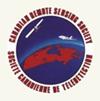Remote sensing of lake CDOM using noncontemporaneous field data
IF 2
4区 地球科学
Q3 REMOTE SENSING
引用次数: 25
Abstract
There are perhaps millions of lakes in Canada, and remote sensing is a crucial tool for making regional estimates of carbon stocks. Estimation using existing platforms has been hampered by both spatial and spectral resolution, but a new generation of sensors promises greatly improved image quality with broad-scale repeat coverage. Nearly all remote sensing studies in aquatic environments include carefully coordinated field campaigns with satellite overpasses, but this greatly limits the number of lakes that can be used in model development. We explored the opportunities and limits for combining high-quality Advanced Land Imager imagery with legacy lake samples to estimate colored dissolved organic matter (CDOM), a lake characteristic of high value in constructing lake carbon budgets. The passage of time produces somewhat greater scatter than in the standard model with timed field campaign, but there is no indication of a bias toward an incorrect model when using field samples from a variety of dates. Because many thousands of older field samples exist for Canadian lakes, existing limnological databases hold considerable value for estimating CDOM from satellite with sensors of sufficient radiometric depth and signal quality. This study reveals a substantial opportunity for creating and refining estimates of fundamental lake parameters in one of the world's great storehouses of aquatic carbon.非同期野外数据遥感湖泊CDOM
加拿大可能有数百万个湖泊,遥感是估算区域碳储量的关键工具。使用现有平台进行估计受到空间和光谱分辨率的限制,但新一代传感器有望大大提高图像质量,并具有大范围重复覆盖。几乎所有关于水生环境的遥感研究都包括利用卫星立桥仔细协调的实地活动,但这极大地限制了可用于模型开发的湖泊的数量。我们探索了将高质量的先进陆地成像仪图像与遗留湖泊样本相结合来估计彩色溶解有机质(CDOM)的机会和局限性,彩色溶解有机质是构建湖泊碳预算的高价值湖泊特征。随着时间的推移,与有时间的现场活动的标准模型相比,会产生更大的分散,但当使用来自不同日期的现场样本时,没有迹象表明会偏向于不正确的模型。由于加拿大湖泊有数千个较早的实地样本,现有的湖泊数据库对于从具有足够辐射深度和信号质量的传感器的卫星估计CDOM具有相当大的价值。这项研究揭示了一个重要的机会,可以在世界上最大的水生碳储存库之一创建和完善基本湖泊参数的估计。
本文章由计算机程序翻译,如有差异,请以英文原文为准。
求助全文
约1分钟内获得全文
求助全文
来源期刊

Canadian Journal of Remote Sensing
REMOTE SENSING-
自引率
3.80%
发文量
40
期刊介绍:
Canadian Journal of Remote Sensing / Journal canadien de télédétection is a publication of the Canadian Aeronautics and Space Institute (CASI) and the official journal of the Canadian Remote Sensing Society (CRSS-SCT).
Canadian Journal of Remote Sensing provides a forum for the publication of scientific research and review articles. The journal publishes topics including sensor and algorithm development, image processing techniques and advances focused on a wide range of remote sensing applications including, but not restricted to; forestry and agriculture, ecology, hydrology and water resources, oceans and ice, geology, urban, atmosphere, and environmental science. Articles can cover local to global scales and can be directly relevant to the Canadian, or equally important, the international community. The international editorial board provides expertise in a wide range of remote sensing theory and applications.
 求助内容:
求助内容: 应助结果提醒方式:
应助结果提醒方式:


